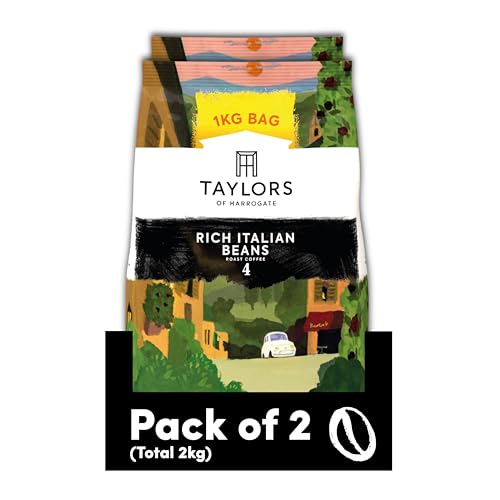10 Sites To Help You Become An Expert In Which Coffee Beans Are The Best

Which Coffee Beans Are the Best?

When it comes to finding the perfect cup of coffee, the type of beans you choose can make the difference. Each type has a distinct flavor that is perfect for various drinks and food recipes.
Panama is the leader in the field with their rare Geisha beans, which score high in cupping tests, and are also expensive at auction. Ethiopia and particularly Yirgacheffe bean, is not far behind.
1. Geisha Beans from Panama
If you're looking to find the top coffee beans available look at Geisha beans from Panama. Geisha beans are prized for their distinctive flavor and aroma. These rare beans are grown at very high altitudes and undergo a special method of processing that creates their distinctive flavors. The result is a cup that is smooth and rich in flavor.
The Geisha coffee plant is native to Ethiopia It was first introduced in Panama in 1963. coffee beans unroasted is known to win competitions with its prestigious taste and flavor. Geisha beans are also expensive due to the work involved in growing them. Geisha coffee plants are more difficult to grow because they require higher elevations as well as special climate conditions.
Geisha beans are also very delicate and must be handled with care. They should be sorted with care and meticulously prepared to roast. Otherwise, they may turn bitter and acidic.
The beans are cultivated at the Janson Coffee Farm, which is located in Volcan, Panama. The farm is committed to protecting the environment, and is a leader in the production of high-quality beans. They utilize solar panels to generate energy as well as recycle waste and water materials, and also use enzyme microbes for soil improvement. They also plant trees and reuse water to wash. Their coffee is Washed Geisha, which was awarded the highest score in a Panama Coffee Competition.
2. Ethiopian Coffee
Ethiopia is a huge coffee producer that has a long record of producing some of the world's finest drinks. Ethiopia is the fifth largest producer of coffee in the world. Their beans are appreciated for their distinctive fruity, floral flavor profiles. Contrary to other coffees, Ethiopians taste their best when they are roast to a medium-low temperature. This lets the floral notes be preserved while highlighting fruity and citrus flavors.
Sidamo beans, popular for their acidity and crispness and crisp acidity, are among the top around the world. However, other varieties of coffee, such as Yirgacheffe or Harar, are equally well-respected. Harar is the oldest and most popular coffee variety. It has a distinct mocha and wine flavor. Coffees from the Guji region are also known for having complex flavors and a distinct Terroir.
Another kind of coffee from Ethiopia is known as natural process. It is made using dry-processing instead of wet-processing. Wet-processing involves the washing of coffee beans that remove some of its fruity and sweet flavors. Up until recently, natural process coffees from Ethiopia were less well-known than their washed counterparts, and they were often utilized to brighten blends rather than being sold as a product of a single origin on the market for specialty. Recent technological advancements have led to better quality natural Ethiopians.
3. Brazilian Coffee
Brazilian Coffee is a rich blend of different types of beans. It is characterized by the low acidity and the smooth body. It has sweet-toned flavors with subtle chocolate notes. The flavors vary based on the state and region where it is grown. It is also renowned for its citrus and nut notes. It is a great choice for those who like medium-bodied coffee.
Brazil is the world's largest exporter and producer of coffee. Brazil produces more than 30 percent of the world's beans. Brazil's economy is heavily reliant on this major agricultural industry. The climate is ideal for coffee cultivation in Brazil, and there are fourteen major coffee-producing regions.
Catuai beans, Mundo Novo beans, Obata beans and Icatu are the primary beans used in Brazilian coffee. These are all varieties of Arabica coffee. There are many hybrids that contain Robusta. Robusta is a type of coffee bean which originates in Sub-Saharan Africa. It's not as tasty as Arabica coffee, but it is much easier to grow and harvest.
It is important to realize that slavery continues to exist in the coffee industry. Slaves in Brazil are often forced to endure lengthy and exhausting work days and often do not have adequate housing. The government has taken steps to address this issue by establishing programs to assist farmers with their debts.
4. Indonesian Coffee
The top Indonesian coffee beans are renowned for their earthy, dark flavor. The volcanic ash mixed into the soil gives them a strong body and low acidity that make them ideal for blending with more acidic beans from Central America and East Africa. They also take well to darker roasting. Indonesian coffees are characterized by a complex and rustic flavor profile. They often feature notes of tobacco, leather wood, ripe fruit and spices.
The major producers of coffee in Indonesia are located on Java and Sumatra and some are from Sulawesi, Bali, and Papua New Guinea. A lot of farms in these regions utilize a wet-hulling process. This differs from the washed process that is common in most of the world, where the cherries of coffee are de-pulped and then washed prior to drying. The hulling process reduces the amount of water that is in the coffee, which reduces the impact that rain can have on the quality of the finished product.
One of the most popular and high-quality varieties of Indonesian coffee is Mandheling which comes from the Toraja region. It is a rich and full-bodied coffee with hints of candied fruit and intense chocolate flavors. Gayo and Lintong are other types of coffee that come from this region. These coffees are usually wet-hulled and have a strong and smoky taste.
